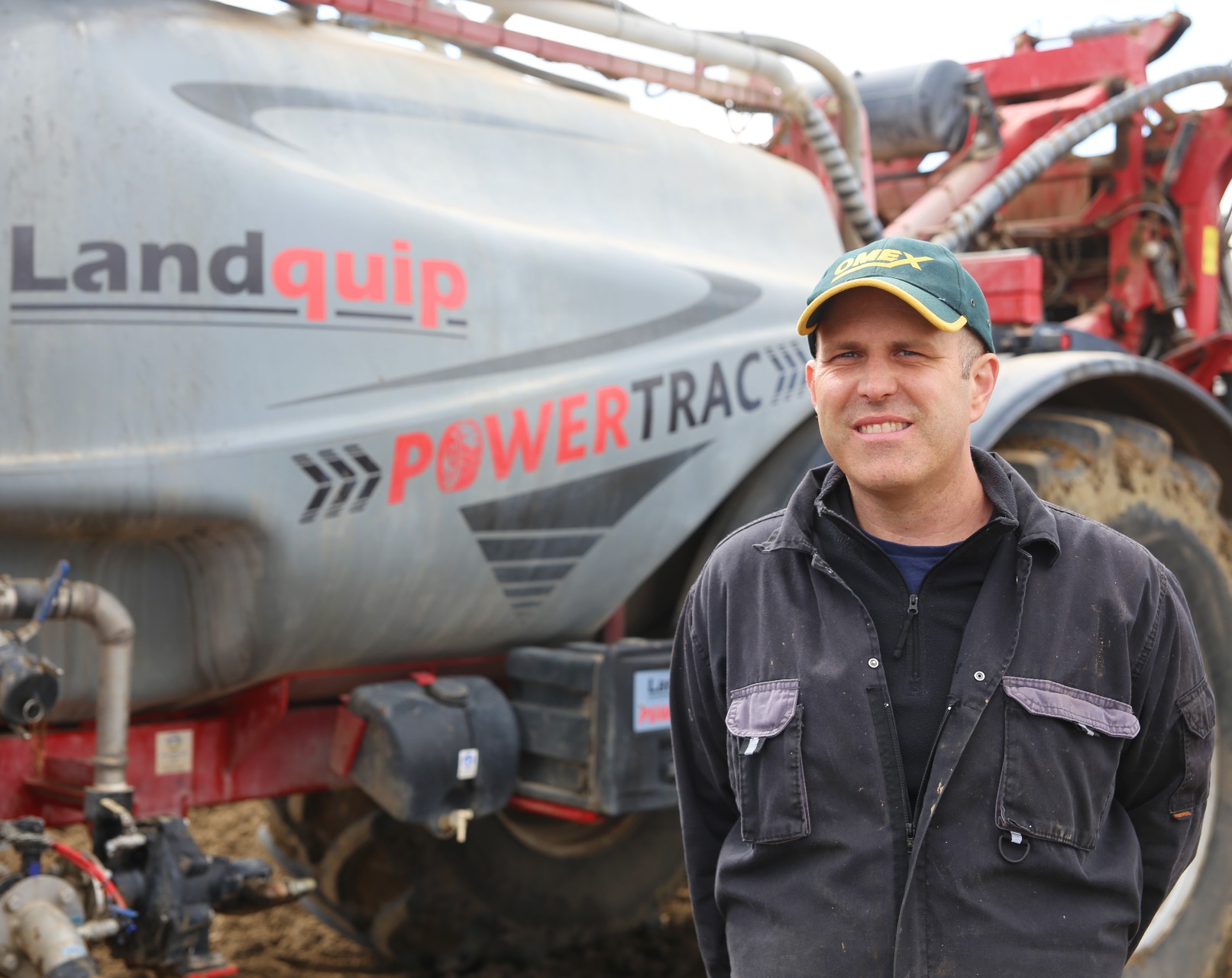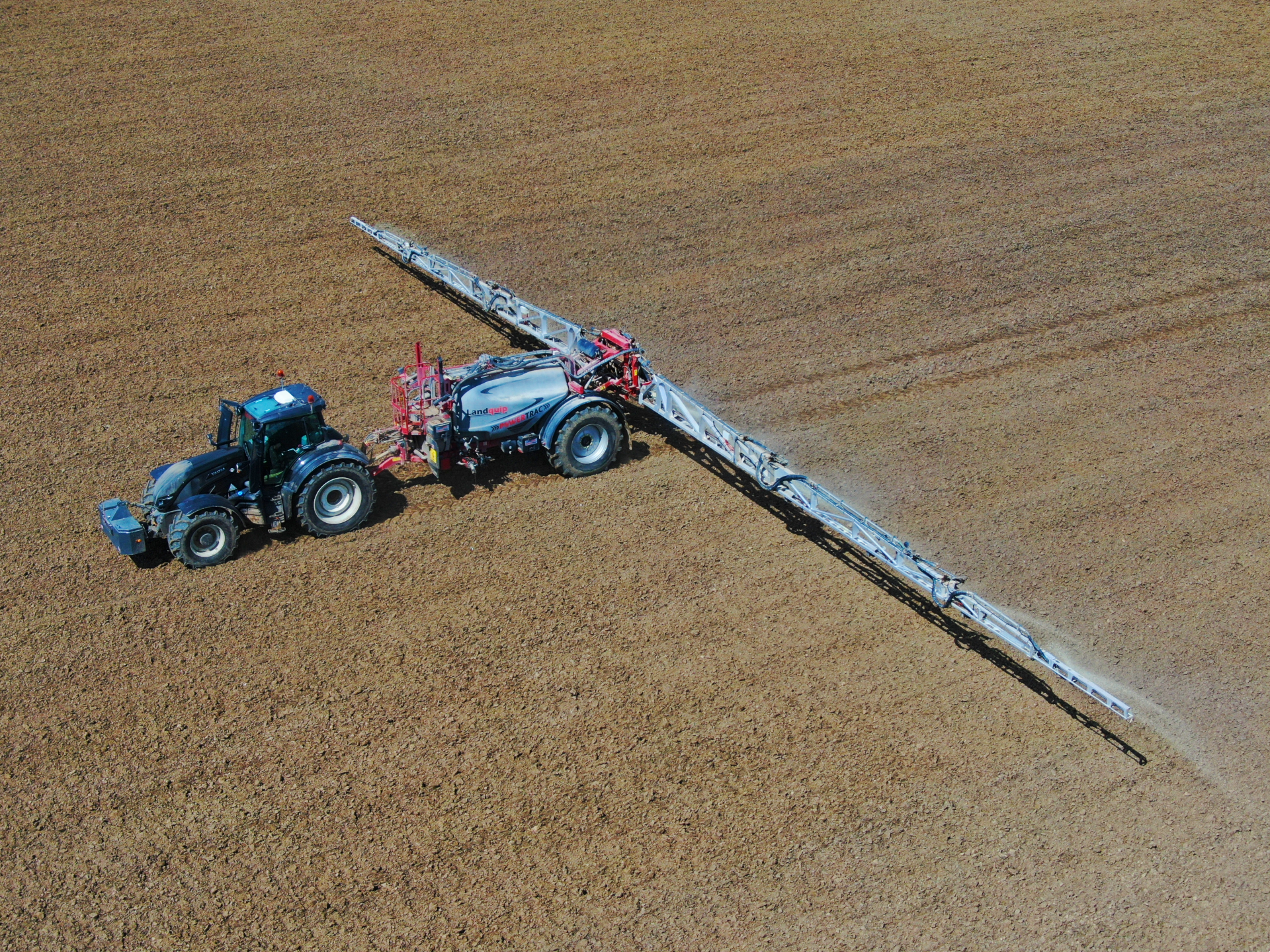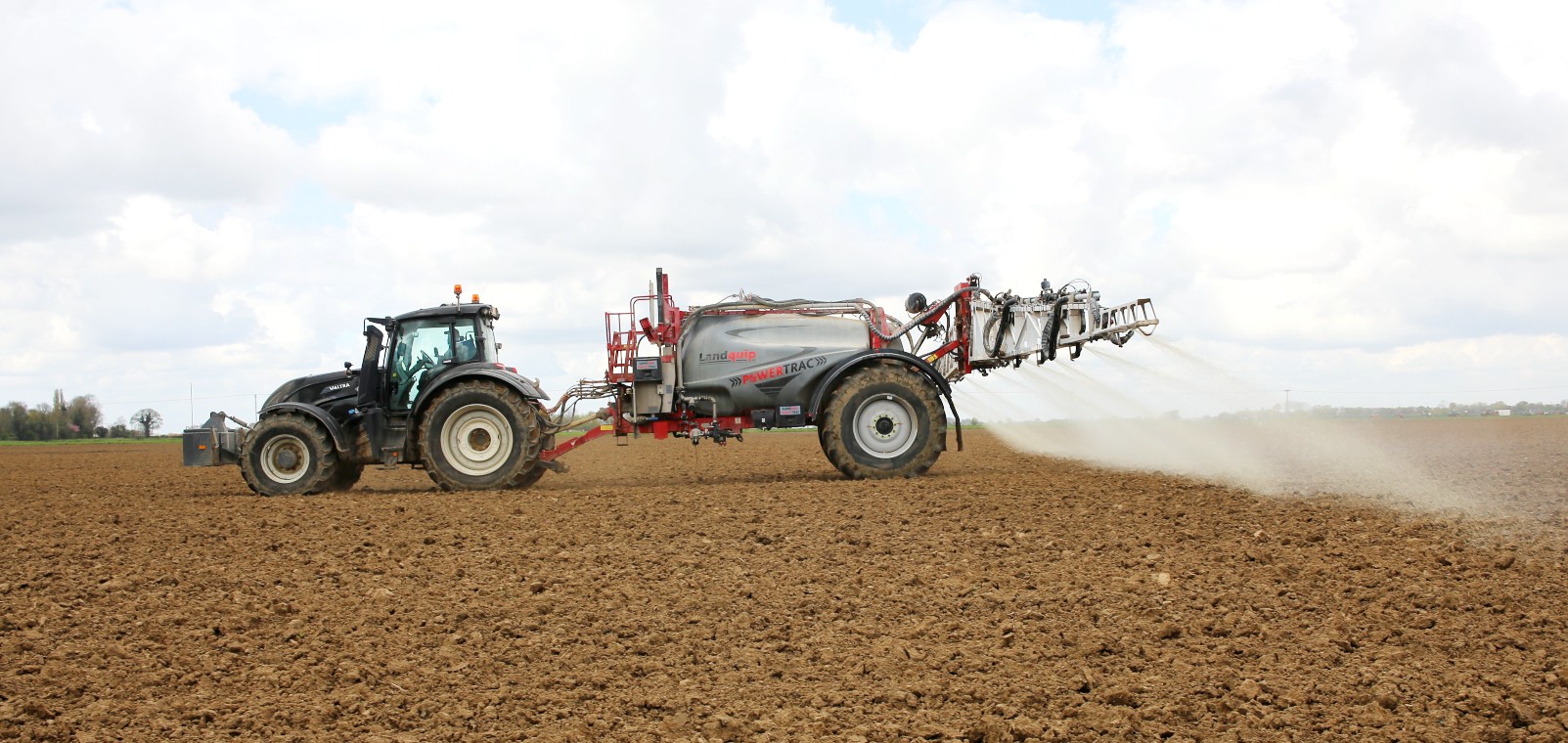Six-wheel drive increases work opportunities and protects soil
16th June 2021
A Lincolnshire-based contractor who invested in a new model of trailed sprayer with a driven axle says the difference in travelling performance is ‘incredible’. Our machinery editor David Williams reports.
“The original spray contracting business was set up when few farmers had self-propelled sprayers,” explained Jason. “We ran specialist machines for fertiliser applications, with wide booms and large tanks giving us the capacity we needed for high- rate applications.”
Long application season

Jason Palmer of J&S Palmer contractors
Jason’s Omex applications start in March in the south Lincolnshire area for potato, vegetable and sugar beet growers. Then applications to maize and vegetable crops continue through the summer, and applying to cereal stubbles over a larger area completes the season. “We are busy for most of the year applying Omex to approximately 9,000ha of stubbles and crops. In recent years we operated one trailed sprayer and another self-propelled, but when it isn’t spraying the self-propelled is unused in the shed whereas the tractor that pulls the trailed sprayer is often used on the farm. If a tractor breakdown occurs, then it’s also easy to get hold of another at short notice, so when we needed a new sprayer last year we decided to invest in another trailed model,” Jason continued.
Landquip preferred
The previous self-propelled sprayer’s Landquip 36m fertiliser boom had proved strong and reliable, so Jason approached Landquip managing director Richard Abbott for a quote for a bespoke machine, tailored specifically to suit his business. The required specification included 6,000 litres capacity, a three-inch suction system and two inch pressure distribution lines to 12 high output nozzles, and a high capacity 1,300 litres/min high pressure centrifugal pump. After two wet winters resulting in a late start to the spring work, Jason also wanted a sprayer capable of travelling in challenging conditions, and having heard that a new driven axle option was available, he asked for this to be included in the specification.
“I had expected the driven axle option to be too expensive to justify, but I was pleasantly surprised. Buying a new sprayer is a big investment anyway, and adding the driven axle didn’t make a huge difference. Advantages such as being able to spray when conditions are marginal for standard machines while also reducing ground damage were attractive, and Richard had a system available which met the criteria so I placed my order.”
130hp drive system
The new Landquip PowerTrac trailed sprayer, while based on Landquip’s standard trailed machines, has a heavier duty chassis and all-new design quadruple airbag suspension plus a PTO-driven, load-sensing, high torque axial piston pump which supplies oil flow to drive motors within the axle hubs.
Up to 130hp is transmitted to the drive axle and Landquip’s field tests demonstrated that a 6,000-litre sprayer carrying up to 8,400kg of suspension fertiliser across ploughed land was propelled at speeds up to 12kph with the tractor out of gear.
Reduced soil disturbance
Landquip argues that a tractor and PowerTrac trailed sprayer with three axles offers better weight distribution and less soil compaction than large self-propelled sprayers with two axles, and with the tractive force needed to propel the combination across the field shared between six wheels rather than four there is less slippage and soil disturbance.
PowerTrac sprayers are available with axle track widths from 1.8–2.0m (and 2.5m for export). There is also a steering axle option with wheel angles up to 20 degrees. Central tyre inflation is also an option. Air brakes are standard with ABS available as an upgrade.
Simple control
Axle control is through a compact in-cab display. The operator simply selects between two forward and two reverse gears to match the working speed range and travel direction, and the drive assistance required in 20 per cent steps. When moving between work areas, the axle automatically enters a free-wheeling mode or can be fully disengaged. Drive assistance disengages when the clutch pedal is pressed, or when the tractor transmission is in neutral.
Excellent sprayer
Jason’s PowerTrac sprayer was delivered in March, and he was immediately impressed by its performance. “The whole sprayer design is excellent,” he explained. “The tank empties completely and stays clean with nowhere for suspension fertiliser to build up. We have independent nozzle selection to all 12 nozzles with full control through the tractor’s Isobus display and we just plug it in and it works. There were no issues regarding compatibility. A separate tank holds 200 litres of oil for the hydraulic axle drive circuit and has been cleverly incorporated into the steps improving access to the main tank.”
Jason said that the PowerTrac’s driven axle makes a big difference. “For most of our work so far on relatively level soft ground, we have found that running it at 40 per cent of its capacity is ideal. Watching the tractor and sprayer combination travelling, it’s easy to see the difference with the sprayer axle drive engaged. Without it, the tractor wheels constantly fight for traction but as soon as the axle is engaged then there is no visible wheel slip. There is less surface disturbance and wheelings are shallower.
“One advantage we hadn’t anticipated was the improvement when backing into corners. Many of the fields have been ploughed and if the wheel of a standard sprayer drops into a deep furrow when reversing, the resistance on one side causes the drawbar to jack-knife. With its driven wheels, the PowerTrac sprayer pulls backwards in a straight line even when the ground is wet and uneven. It ends up exactly where we want it and can immediately start spraying again parallel to the field edge.”
Challenging conditions
On the day of Farmers Guide’s visit, Jason’s PowerTrac sprayer was working near Holbeach. The previous crop was sugar beet which had been ploughed after harvest, but there were several very wet patches. “Previously I would have steered around wet holes rather than risk becoming stuck or causing deep ruts, but by selecting 75 per cent assistance from the driven axle I can stick to the wheelings indicated by the GPS guidance and apply fertiliser accurately across the field,” he continued. “It’s reassuring and helps me to do a better job, and if conditions become so bad that I do become stuck, then selecting reverse and letting the sprayer wheels pull me out backwards is an effective option.”
Worthwhile investment
“The Landquip sprayer is well designed and I am very pleased with its performance and ease of use,” concluded Jason. “Even when ground conditions are good, the PowerTrac axle makes a difference and in a wet season it will help us make the most of opportunities to work while protecting the ground for our customers. We have only had the sprayer for six weeks, but I am confident already that we bought the best sprayer for our job.”


